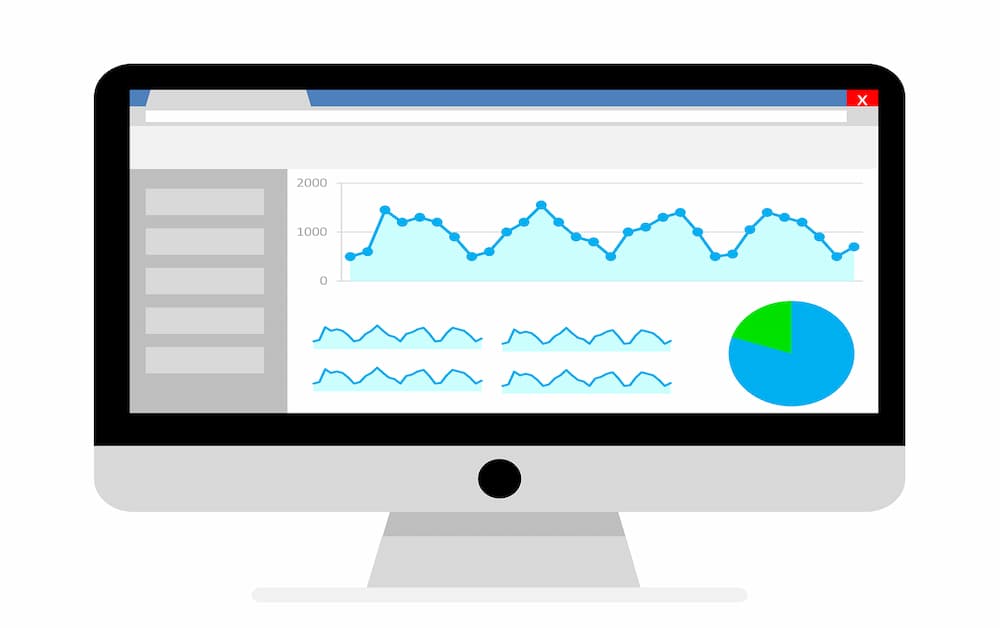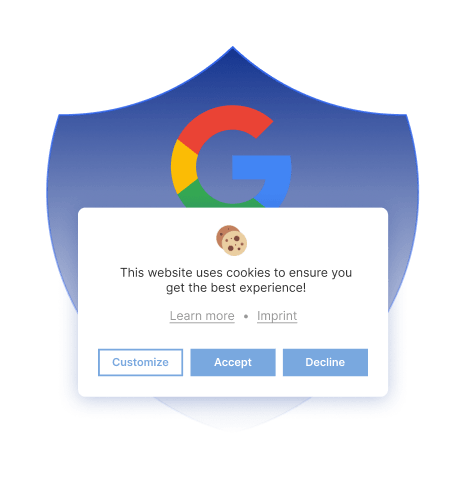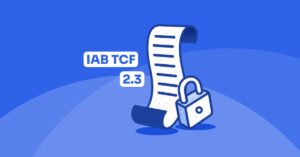Introduction
Google Consent Mode is a powerful tool introduced as a part of Google Analytics 4 (GA4) to address the growing concerns of website visitors regarding data privacy. It provides an effective solution that enables website owners to collect valuable data on user behavior while respecting their visitors’ privacy preferences. With this feature, website owners can manage user consent for data collection and customize data usage following user privacy preferences. This ensures that user data is collected and used in a way that is compliant with privacy regulations and laws in their region.
Using Google Consent Mode, website owners can provide visitors with a more transparent and trustworthy experience, which helps establish a stronger relationship between the website and its visitors. It gives visitors greater control over how their data is collected and used, which can help build trust and loyalty, leading to increased engagement and higher conversion rates.
Overall, Google Consent Mode is a valuable addition to GA4 that helps website owners gain critical insights into user behavior while respecting user privacy rights. It is a win-win solution that enables website owners to collect data that complies with privacy regulations while also providing a better experience for their visitors.
Understanding behavioral modeling
Behavioral modeling for consent mode is a technique utilized in the context of Google Consent Mode that involves analyzing observed user data and leveraging machine learning algorithms to estimate data from users who decline consent for data collection. This approach seeks to provide valuable insights into the behavior of users while still excluding estimated data from non-consenting users, which is essential for ensuring compliance with data privacy regulations.
By utilizing behavioral modeling, websites, and apps can gain valuable insights into user behavior patterns and preferences without collecting sensitive data from users who have opted out of data collection. The process involves training machine learning models on observed user data to make accurate predictions about the behavior of non-consenting users based on their demographics, browsing history, and other available data points.
Behavioral modeling is a powerful tool for website owners and marketers who must stay compliant with data privacy regulations while gaining valuable insights into user behavior. By utilizing this approach, they can tailor their marketing strategies and website content better to meet the needs and preferences of their target audience, ultimately driving more growth and revenue for their business.

Leveraging user behavior data
Google Consent Mode is a powerful tool that empowers website owners to collect and analyze user behavior data in a privacy-respecting manner. With this feature, website owners can track user journeys, understand session metrics, and monitor daily active users without compromising user privacy preferences. By leveraging the observed data and the behavioral modeling capabilities of Google Consent Mode, website owners can gain valuable insights into customer behavior and optimize their marketing strategies accordingly.
This feature is especially useful for businesses that want to personalize their marketing campaigns and improve their website’s user experience. Overall, Google Consent Mode is a game-changer for website owners who want to strike the perfect balance between data collection and user privacy.
Role of modeled data in analytics reports
Google Consent Mode is a privacy-focused solution that helps websites comply with data privacy regulations while still gathering valuable analytics data. With Google Consent Mode, only observed data is included in analytics reports. This means that any data collected from users who have not consented to be tracked is excluded from the reports. This approach ensures that analytics reports are rigorous and compliant with data privacy regulations.
Additionally, modeled data from non-consenting users is also excluded from these reports. Instead of observable data, the reports only include actual data, clearly distinguishing between actual and estimated data. This way, businesses can have confidence in the accuracy of their analytics reports while still respecting their users’ privacy.
Impact on Google Ads and conversion modeling
Google Consent Mode is a recently introduced feature that allows website owners to adapt their tracking and data processing practices to comply with various data protection and privacy regulations. Using Behavioral Modeling, Google Consent Mode allows website owners to exclude estimated data from non-consenting users, which helps them ensure that their advertising campaigns are based on accurate and reliable data.
This approach can lead to a more effective targeting strategy, resulting in higher conversion rates and overall better performance of Google Ads. In other words, Google Consent Mode can help website owners optimize their ad performance while respecting user privacy and data protection regulations.

Implementing Consent Mode: Best practices
Implementing Google Consent Mode requires adherence to best practices to ensure compliance with privacy regulations and effective data collection. Here are some key best practices:
Understanding consent modes: Familiarize yourself with basic and advanced implementation methods.
Obtaining user consent: Clearly communicate and obtain user consent for storing behavioral information.
Communicating consent choice: Use Consent Management Platforms (CMPs) or custom implementations to communicate user consent choices to Google.
Optimizing tagging: Adopt tagging best practices that respect user choices and ensure accurate data collection.
Informing Google: Use consent mode to inform Google about user choices regarding cookies or app permissions, influencing tag behavior accordingly
Ensuring compliance with privacy regulations
Google Consent Mode is a powerful tool that website owners can use to comply with the latest data privacy regulations, including the General Data Protection Regulation (GDPR) and the California Consumer Privacy Act (CCPA). This innovative feature helps to protect users’ privacy by respecting their preferences and excluding estimated data from non-consenting users.
By doing so, Google Consent Mode ensures that websites adhere to the strictest privacy standards and that users can feel confident that their data is being handled responsibly and transparently. Whether you are a website owner or a user, Google Consent Mode is an essential tool for protecting your data and ensuring that you control your online privacy.

Challenges and limitations
Google Consent Mode is a privacy-focused solution that enables website owners to request user consent for specific data processing activities. It offers several benefits, such as allowing users to control their data and helping website owners comply with data protection regulations. However, it also comes with certain challenges and limitations that must be considered.
One of Google Consent Mode’s challenges is that it may exclude estimated data from non-consenting users. Estimated data refers to data that is inferred or predicted based on other available data and is commonly used in analytics reports. This can result in missing data and incomplete analytics reports, making it difficult for website owners to make informed decisions about their website’s performance and user behavior.
For instance, if a significant number of users do not consent to data processing activities, such as tracking cookies or personalized advertising, this could result in a large amount of estimated data being excluded from analytics reports. As a result, website owners may not have a complete view of their user behavior and may be unable to optimize their website’s performance as effectively.
Therefore, while Google Consent Mode offers significant benefits regarding user privacy and data compliance, website owners should also be aware of its limitations and take steps to mitigate the impact of missing data on their analytics reports.
Addressing missing data issues
Missing data is a common problem that website owners face when using Google Consent Mode. Fortunately, a few strategies can be implemented to tackle this issue. One such strategy is incentivizing user consent by offering rewards or exclusive access to certain features or content. Another approach is to optimize the consent dialog box’s appearance by making it more visually appealing and user-friendly.
Additionally, providing clear explanations of the benefits of data collection can help encourage users to provide their consent. By implementing these strategies, website owners can improve their data collection rates and ensure they obtain accurate and complete data.

Training data and eligibility criteria
To ensure that the behavioral modeling is accurate and reliable, the Google Consent Mode uses a sophisticated methodology involving analyzing vast training data and establishing rigorous eligibility criteria. By examining user behavior patterns and identifying similar users, the Consent Mode generates more precise estimates of user consent preferences, providing a more personalized and user-friendly experience for website visitors. This advanced approach ensures that websites adhere to the strictest privacy standards while providing users with the best online experience.
Conclusion
Google Consent Mode is a powerful tool for website owners that enables them to collect valuable data on user behavior while adhering to privacy regulations and respecting user preferences. One key benefit of this technology is its behavioral modeling capabilities, which allow site owners to gain deep insights into how users interact with their website and content. By leveraging observed data and excluding estimated data from non-consenting users, website owners can maximize the accuracy and reliability of their analytics reports. This means they can make more informed decisions about their marketing strategies and optimize their website to meet the needs of their target audience better.
Moreover, the Google Consent Mode ensures that user privacy is protected through its intelligent data processing techniques. This technology excludes estimated data from users without consent to tracking, ensuring that only relevant and accurate data is collected. The Google Consent Mode is an essential tool for website owners who want to utilize user data to gain valuable insights into user behavior while respecting user privacy preferences and complying with data privacy regulations. With this technology, website owners can make informed decisions, optimize their marketing strategies, and ultimately improve the user experience for their visitors.




